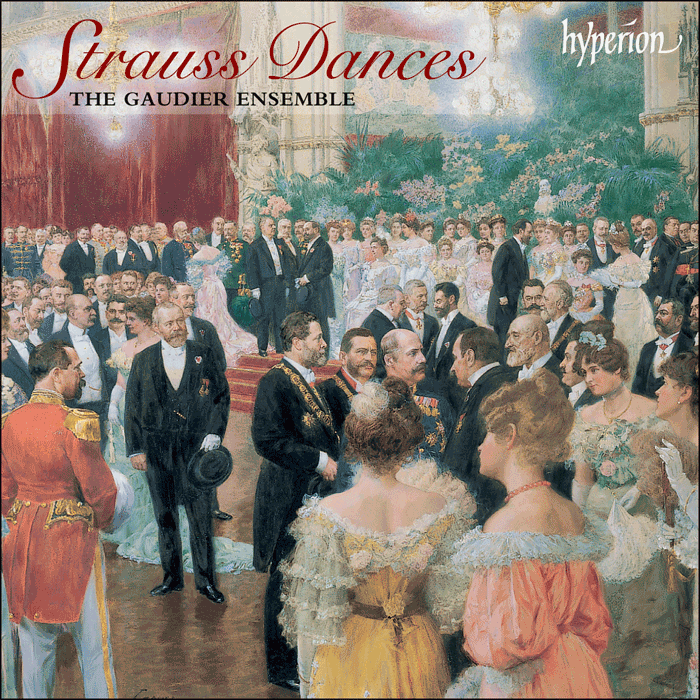Strauss Dances
The Gaudier Ensemble
CDA67169
Among the public meeting places of nineteenth-century Vienna, the dance hall held a prominent position. According to one's social class or the time of year, the location might be an urban dance hall, a rural open-air gathering, or some grand society location. There the latest dance creations vied for attention with the old favourites. Of the dance styles that prevailed, those that enjoyed the greatest popularity during the period included the waltz, polka and galop. Among the dance-musicians, none rivalled the various members of the Strauss family. Increasingly, their compositions have been perceived to rise above the normal limitations of the dance form, becoming at times miniature tone poems. From the dance halls of Vienna their music spread around the globe, creating a demand which they helped to satisfy with tours of their own. During the 1830s and 1840s, the elder Johann Strauss (1804-1849), the founder of the dynasty, made gruelling trips around Europe by coach. Later, tours by his three sons - Johann the younger (1825-1899), Josef (1827-1870) and Eduard (1835-1916) - helped to develop the family's popularity still further.
Reductions in orchestration were made at that time by the elder Johann in order to meet the demands of smaller ensembles. More recently, a Viennese musicologist has made reductions in a similar style, and it is a selection of such arrangements that The Gaudier Ensemble plays here.

